Datasheet
Year, pagecount:2018, 5 page(s)
Language:English
Downloads:2
Uploaded:September 10, 2018
Size:1 MB
Institution:
-
Comments:
Downtown Colorado, INC
Attachment:-
Download in PDF:Please log in!
Comments
No comments yet. You can be the first!Content extract
Source: http://www.doksinet Landlocked Town of Parachute // CHALLENGE STATEMENT // Parachute has been in the boom and bust cycle of the natural resource industry that has left the downtown underdeveloped. Property investors purchased much of the land hoping to turn a profit from mineral harvest, but with new technology this has happened off site, leaving the property value less than expected when purchased. Due to the high investment when purchased, property owners are holding out for high paying developers. This leaves much of the downtown business properties undeveloped at this time Parachute has a memorandum of understanding for three acres with one key property owner group and is seeking assistance in determining how to activate this land, as it sits adjacent to a very active rest area in a prime commercial district. A successful outcome for this challenge is an executable plan to cost effectively create an attractive place for the community within the three acres of land in
question, and provide the impetus to begin development. EXECUTIVE SUMMARY OF STUDIO WORKSHOP // Day One consisted principally of identifying and becoming familiar with the challenge. Integral in this process was understanding the context of Parachute as a town that has been subject to decades of the boom-bust cycle inherent within energy production, the desire of businesses and residents to grow and diversify their economy, and the unwillingness of major landowners to concede a poor investment, cut their losses and begin development. It was also beneficial to learn about how various town projects intertwine, with the challenge at hand playing a major role in their success; these projects include revitalizing the historic downtown, developing Parachute’s brand as a hub of outdoor recreation, and developing more local restaurant and retail options. Equally important was identifying Parachute’s rustic, rugged, rough and tumble personality. Day Two was dedicated to generating ideas
and developing a strategy to move forward. A pivotal moment in this process was the change through time exercise. Upon reflection, Town leaders of Parachute recall the situation being relatively positive decades ago, and declining as the property was purchased and left vacant. Left unchecked, the situation will continue to steadily get worse; on the other hand, should the community’s vision of economic growth, development and diversification occur, Parachute will have the capacity to reach its potential as a vibrant hub of tourism and outdoor recreation. In order to attain this goal a variety of ideas were pitched. Those identified as potentially having high impact with minimal effort include enacting an antidilapidation ordinance, considering the imposition of a lien, providing certain positive incentives to developers, creating a comprehensive economic development plan, and creating a partnership between the land owner and the town. Of particular interest was the development of a
URA wielding the power of eminent domain 1 Source: http://www.doksinet TEAM MEMBERS // Andrew Wallace, City of Trinidad (VISTA) Brian Williams, CU Denver Student Carolyn Doran, Localworks Carolyn Cutler, City of Lafayette Derek Wingfield, Town of Parachute Elaine Brett, DCI Board Erin Lyng, PUMA Jane Bral, CDLE Division of Oil and Public Safety Jashodhara Sen, CU Boulder Student Kimberly Bailey, City of Fountain Lauralee Patton, Town of Parachute Melissa Rogers, City of Aurora Rick Kron, Spencer Fane BACKGROUND INFORMATION // The Town of Parachute is a home rule community of approximately 1,600 residents in Western Colorado. Originally a railroad town, Parachute was split with the construction of I-70, which has resulted in a geographic chasm that has at times lead to tension between citizens. Further complicating matters is adjacent Battlement Mesa, an unincorporated area that is home to nearly twice the number of people who live within Parachute’s borders. The development of
Battlement Mesa came underway as speculation grew out of the booming oil industry in the region decades ago; however, Exxon’s decision to pull out in the early 1980’s resulted in much of the population of both Parachute and Battlement Mesa being left without work, severely crippling the local economy. In 2013, Amendment 64 to the Colorado constitution legalized the sale of retail marijuana; after a fierce debate, Parachute reluctantly allowed distributors to operate within town limits. The resulting tax revenue and influx of customers from the highway was large enough to stabilize the community’s economy. However, town officials are keenly aware that this stopgap is ephemeral, and that a lasting solution is needed to build resiliency within Parachute’s economy via diversification to mitigate the impact of the boom-bust cycle of energy production. Additionally, citizens crave more local options for both retail and restaurants, currently driving to nearby Rifle, Glenwood Springs,
and Grand Junction for these activities. Alas, the city is presently out of developable retail space; key parcels are tied up by major landowners in the area. In particular, a three-acre lot in the center of town, easily visible upon entering Parachute, is completely vacant. This location is problematic for several reasons: first, it is an unattractive sight for potential customers; second, it is in close proximity to Parachute’s historic downtown, and does not encourage visitation via a critical mass of available goods and services; third, it is also in proximity to an area that the town wishes to develop into an attractive location for outdoor tourism. Finally, there are two other parcels that may be used for commercial activity that have not been activated, but almost certainly would if initial development momentum in the community was to be generated. Naturally, this unattractive, unproductive parcel is causing distress in the community due to the consumer dollars that could be
but aren’t brought into town if only development would occur. Unfortunately, the landowner (in fact an entity consisting of five individuals) has refused to accept the offers of either the town or various developers. The land was purchased during the height of speculation in the area, and thus was purchased for a relatively high price; however, changes in technology resulting in mineral 2 Source: http://www.doksinet refinement no longer being necessary onsite dramatically reduced the value of the property. Four out of the five landowners do not live in Parachute, and there is speculation that the one who does is planning to move out; as a result, these owners are divested from the community, with only a motive to profit. Moreover, since they are in different locations, it is difficult to arrange a meeting to discuss avenues of development. Finally, because the owners of the property in question are individually wealthy, no motive to sell exists before the land once again becomes
profitable. Meanwhile, the community suffers from continued lack of investment The time has come for the leadership of Parachute to take action regarding these parcels. With efforts to coax and persuade going nowhere, officials intend to develop tools and implement policy that will pressure these lackadaisical parties into taking action. Specifically, the town seeks to update its decades-old zoning codes to modernize the standards and location of property within Parachute’s limits, and consider an anti-dilapidation ordinance similar to that implemented in Trinidad, CO. Officials are also interested in establishing an Urban Renewal Authority (URA). The specter of eminent domain is likely the leverage Parachute needs to command the land owners’ attention and get them to the bargaining table in earnest. Population: 1,600 Stakeholders + Partners: Town of Parachute: Citizens seek a beautiful and economically resilient home. Land Owner: Desires to make a profit from development.
Business Owners: Wish to see developmental momentum that will attract customers. Assets: Strong, competent town manager with vision, leadership and the will to act. Plenty of landowners who would be willing to sign onto a petition create a URA. A few million dollars in the town’s reserves; board prepared to invest in community. Obstacles: Obstinate landowner that refuses to take a loss or break even; divested from the community. Staff of generalists possessing relatively little specific knowledge of URA policy. Other parcels that will not develop until initial momentum is generated. RESOURCES // There are a few key resources at the town’s disposal that can be leveraged for best results. First, it is a well known problem that Parachute’s zoning codes are dated and in need of revision. Such revisions have the potential to dramatically overhaul what is acceptable within the town’s limits, including dilapidation as a result of non-development such as
what is currently exhibited on the parcel in question. Second, there is a wealth of legal assistance that can be tapped to assist Parachute in forming its own Urban Renewal Authority (URA). One specific example is Economic Planning Systems, which specializes in feasibility studies. The creation and use of a URA is a complex process and access to specialized knowledge is vital Third, the town has saved a few million dollars in a rainy-day fund that may be used to invest into the community. Shifting opinions on the board overseeing the fund seem to make this a particularly viable source of funding at the present time. This will be important for making the prospect of eminent domain credible 3 Source: http://www.doksinet Finally, there appear to be a multitude of property owners within town limits which would like to see development take place on the property, and would be willing to lend their political support to a measure to bring a URA into existence. DESIRED OUTCOMES // Above
all, the community’s objective is to get this and other parcels of land activated. If the present land owners are willing to move forward with development, then they are welcome to stay; if not, the town would like to see the property sold to a party invested in the community that is willing to accept reasonable offers from developers. Regardless, officials would like to see the development of a URA, as it is a long term tool that can be used to spur development within town limits. The community would like to see the property developed into something providing significant utility to citizens and aesthetics remain important, particularly due to the location’s proximity to the highway. ACTION STEPS // 1. STEP ONE : Develop a comprehensive, focused economic development plan a. Administrators must reflect on the identity of the community, ensure they possess a clear picture of the wants and needs of its citizens, and create a focused vision for the future. b. Having established a
guiding vision, a few key strategies should be developed that direct the time, energy and resources of the city in a common, synergistic direction of progress. c. Upon the basis of these strategies, specific processes, policies and tactics may be generated to attract the type of development that supports the town’s overarching economic vision. 2. STEP TWO : Implement policy penalizing non-development a. In concordance with the vision set out by the economic development plan, zoning should be modernized and include stipulations that must be met by land owners and developers. b. Consider an anti-dilapidation ordinance like that used in Trinidad Such ordinances define acceptable property conditions, and assess fines for lack of maintenance or development. c. Create pressure via strict enforcement of town ordinances; begin lien proceedings where appropriate to generate leverage that will bring the land owners to the bargaining table. 3. STEP THREE : Create an Urban Renewal Authority
wielding the power of eminent domain a. Begin searching for professional help that can walk the staff through the technical aspects of setting up a URA. Multiple firms may be necessary for different, specific functions b. To raise the possibility of eminent domain, a blight study must be conducted For efficiency, it is a better use of resources to conduct a large, sweeping study of a general area rather than several specific studies. c. For blighted property, an appraisal must be generated to determine what a fair price would be for the land seized. A third-party appraisal is generally seen to be a best practice 4 Source: http://www.doksinet d. The land owners must be contacted, and a petition with the signatures from surrounding property owners is necessary to move forward. In the event that eminent domain were to be enacted, the URA would take possession of the property, which could set up a developer during proceedings. It is generally frowned upon to use this mechanism to
transfer property from one private entity to another, but is generally legal with sufficient justification provided. 5
question, and provide the impetus to begin development. EXECUTIVE SUMMARY OF STUDIO WORKSHOP // Day One consisted principally of identifying and becoming familiar with the challenge. Integral in this process was understanding the context of Parachute as a town that has been subject to decades of the boom-bust cycle inherent within energy production, the desire of businesses and residents to grow and diversify their economy, and the unwillingness of major landowners to concede a poor investment, cut their losses and begin development. It was also beneficial to learn about how various town projects intertwine, with the challenge at hand playing a major role in their success; these projects include revitalizing the historic downtown, developing Parachute’s brand as a hub of outdoor recreation, and developing more local restaurant and retail options. Equally important was identifying Parachute’s rustic, rugged, rough and tumble personality. Day Two was dedicated to generating ideas
and developing a strategy to move forward. A pivotal moment in this process was the change through time exercise. Upon reflection, Town leaders of Parachute recall the situation being relatively positive decades ago, and declining as the property was purchased and left vacant. Left unchecked, the situation will continue to steadily get worse; on the other hand, should the community’s vision of economic growth, development and diversification occur, Parachute will have the capacity to reach its potential as a vibrant hub of tourism and outdoor recreation. In order to attain this goal a variety of ideas were pitched. Those identified as potentially having high impact with minimal effort include enacting an antidilapidation ordinance, considering the imposition of a lien, providing certain positive incentives to developers, creating a comprehensive economic development plan, and creating a partnership between the land owner and the town. Of particular interest was the development of a
URA wielding the power of eminent domain 1 Source: http://www.doksinet TEAM MEMBERS // Andrew Wallace, City of Trinidad (VISTA) Brian Williams, CU Denver Student Carolyn Doran, Localworks Carolyn Cutler, City of Lafayette Derek Wingfield, Town of Parachute Elaine Brett, DCI Board Erin Lyng, PUMA Jane Bral, CDLE Division of Oil and Public Safety Jashodhara Sen, CU Boulder Student Kimberly Bailey, City of Fountain Lauralee Patton, Town of Parachute Melissa Rogers, City of Aurora Rick Kron, Spencer Fane BACKGROUND INFORMATION // The Town of Parachute is a home rule community of approximately 1,600 residents in Western Colorado. Originally a railroad town, Parachute was split with the construction of I-70, which has resulted in a geographic chasm that has at times lead to tension between citizens. Further complicating matters is adjacent Battlement Mesa, an unincorporated area that is home to nearly twice the number of people who live within Parachute’s borders. The development of
Battlement Mesa came underway as speculation grew out of the booming oil industry in the region decades ago; however, Exxon’s decision to pull out in the early 1980’s resulted in much of the population of both Parachute and Battlement Mesa being left without work, severely crippling the local economy. In 2013, Amendment 64 to the Colorado constitution legalized the sale of retail marijuana; after a fierce debate, Parachute reluctantly allowed distributors to operate within town limits. The resulting tax revenue and influx of customers from the highway was large enough to stabilize the community’s economy. However, town officials are keenly aware that this stopgap is ephemeral, and that a lasting solution is needed to build resiliency within Parachute’s economy via diversification to mitigate the impact of the boom-bust cycle of energy production. Additionally, citizens crave more local options for both retail and restaurants, currently driving to nearby Rifle, Glenwood Springs,
and Grand Junction for these activities. Alas, the city is presently out of developable retail space; key parcels are tied up by major landowners in the area. In particular, a three-acre lot in the center of town, easily visible upon entering Parachute, is completely vacant. This location is problematic for several reasons: first, it is an unattractive sight for potential customers; second, it is in close proximity to Parachute’s historic downtown, and does not encourage visitation via a critical mass of available goods and services; third, it is also in proximity to an area that the town wishes to develop into an attractive location for outdoor tourism. Finally, there are two other parcels that may be used for commercial activity that have not been activated, but almost certainly would if initial development momentum in the community was to be generated. Naturally, this unattractive, unproductive parcel is causing distress in the community due to the consumer dollars that could be
but aren’t brought into town if only development would occur. Unfortunately, the landowner (in fact an entity consisting of five individuals) has refused to accept the offers of either the town or various developers. The land was purchased during the height of speculation in the area, and thus was purchased for a relatively high price; however, changes in technology resulting in mineral 2 Source: http://www.doksinet refinement no longer being necessary onsite dramatically reduced the value of the property. Four out of the five landowners do not live in Parachute, and there is speculation that the one who does is planning to move out; as a result, these owners are divested from the community, with only a motive to profit. Moreover, since they are in different locations, it is difficult to arrange a meeting to discuss avenues of development. Finally, because the owners of the property in question are individually wealthy, no motive to sell exists before the land once again becomes
profitable. Meanwhile, the community suffers from continued lack of investment The time has come for the leadership of Parachute to take action regarding these parcels. With efforts to coax and persuade going nowhere, officials intend to develop tools and implement policy that will pressure these lackadaisical parties into taking action. Specifically, the town seeks to update its decades-old zoning codes to modernize the standards and location of property within Parachute’s limits, and consider an anti-dilapidation ordinance similar to that implemented in Trinidad, CO. Officials are also interested in establishing an Urban Renewal Authority (URA). The specter of eminent domain is likely the leverage Parachute needs to command the land owners’ attention and get them to the bargaining table in earnest. Population: 1,600 Stakeholders + Partners: Town of Parachute: Citizens seek a beautiful and economically resilient home. Land Owner: Desires to make a profit from development.
Business Owners: Wish to see developmental momentum that will attract customers. Assets: Strong, competent town manager with vision, leadership and the will to act. Plenty of landowners who would be willing to sign onto a petition create a URA. A few million dollars in the town’s reserves; board prepared to invest in community. Obstacles: Obstinate landowner that refuses to take a loss or break even; divested from the community. Staff of generalists possessing relatively little specific knowledge of URA policy. Other parcels that will not develop until initial momentum is generated. RESOURCES // There are a few key resources at the town’s disposal that can be leveraged for best results. First, it is a well known problem that Parachute’s zoning codes are dated and in need of revision. Such revisions have the potential to dramatically overhaul what is acceptable within the town’s limits, including dilapidation as a result of non-development such as
what is currently exhibited on the parcel in question. Second, there is a wealth of legal assistance that can be tapped to assist Parachute in forming its own Urban Renewal Authority (URA). One specific example is Economic Planning Systems, which specializes in feasibility studies. The creation and use of a URA is a complex process and access to specialized knowledge is vital Third, the town has saved a few million dollars in a rainy-day fund that may be used to invest into the community. Shifting opinions on the board overseeing the fund seem to make this a particularly viable source of funding at the present time. This will be important for making the prospect of eminent domain credible 3 Source: http://www.doksinet Finally, there appear to be a multitude of property owners within town limits which would like to see development take place on the property, and would be willing to lend their political support to a measure to bring a URA into existence. DESIRED OUTCOMES // Above
all, the community’s objective is to get this and other parcels of land activated. If the present land owners are willing to move forward with development, then they are welcome to stay; if not, the town would like to see the property sold to a party invested in the community that is willing to accept reasonable offers from developers. Regardless, officials would like to see the development of a URA, as it is a long term tool that can be used to spur development within town limits. The community would like to see the property developed into something providing significant utility to citizens and aesthetics remain important, particularly due to the location’s proximity to the highway. ACTION STEPS // 1. STEP ONE : Develop a comprehensive, focused economic development plan a. Administrators must reflect on the identity of the community, ensure they possess a clear picture of the wants and needs of its citizens, and create a focused vision for the future. b. Having established a
guiding vision, a few key strategies should be developed that direct the time, energy and resources of the city in a common, synergistic direction of progress. c. Upon the basis of these strategies, specific processes, policies and tactics may be generated to attract the type of development that supports the town’s overarching economic vision. 2. STEP TWO : Implement policy penalizing non-development a. In concordance with the vision set out by the economic development plan, zoning should be modernized and include stipulations that must be met by land owners and developers. b. Consider an anti-dilapidation ordinance like that used in Trinidad Such ordinances define acceptable property conditions, and assess fines for lack of maintenance or development. c. Create pressure via strict enforcement of town ordinances; begin lien proceedings where appropriate to generate leverage that will bring the land owners to the bargaining table. 3. STEP THREE : Create an Urban Renewal Authority
wielding the power of eminent domain a. Begin searching for professional help that can walk the staff through the technical aspects of setting up a URA. Multiple firms may be necessary for different, specific functions b. To raise the possibility of eminent domain, a blight study must be conducted For efficiency, it is a better use of resources to conduct a large, sweeping study of a general area rather than several specific studies. c. For blighted property, an appraisal must be generated to determine what a fair price would be for the land seized. A third-party appraisal is generally seen to be a best practice 4 Source: http://www.doksinet d. The land owners must be contacted, and a petition with the signatures from surrounding property owners is necessary to move forward. In the event that eminent domain were to be enacted, the URA would take possession of the property, which could set up a developer during proceedings. It is generally frowned upon to use this mechanism to
transfer property from one private entity to another, but is generally legal with sufficient justification provided. 5
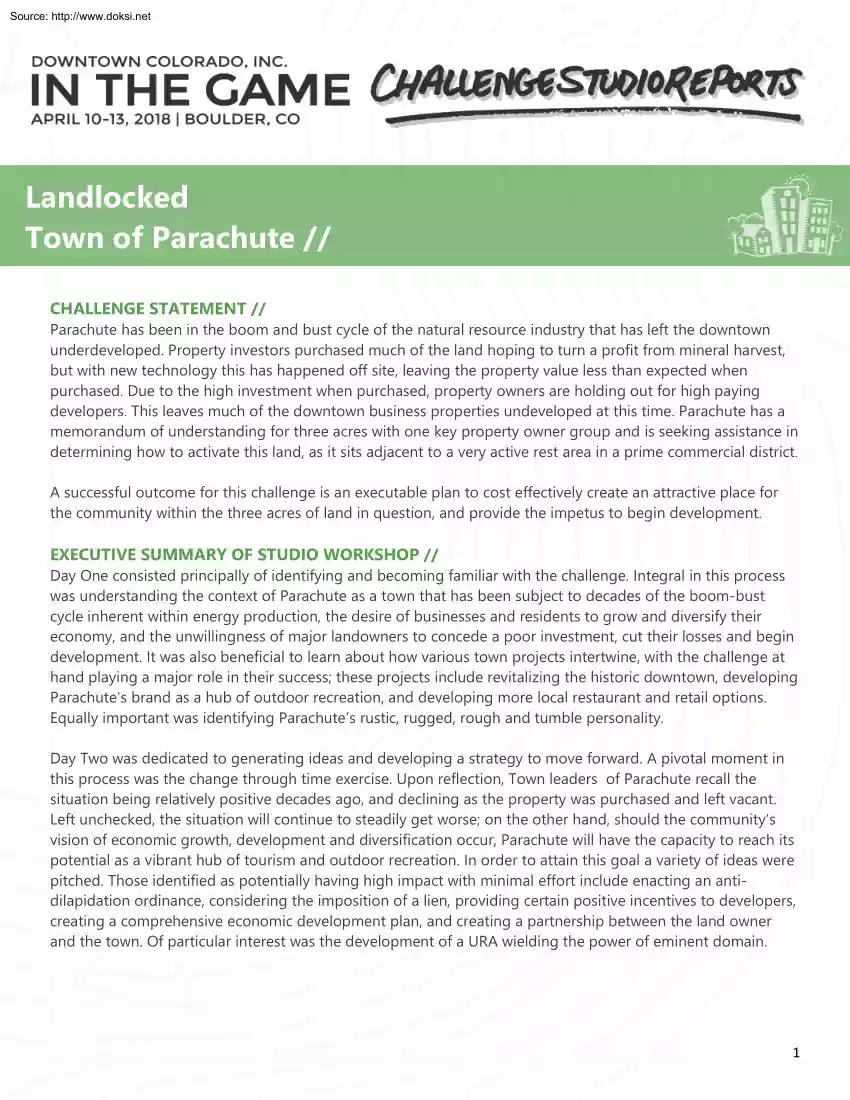
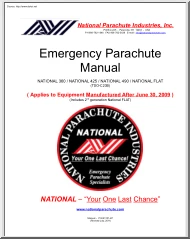
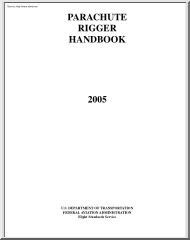
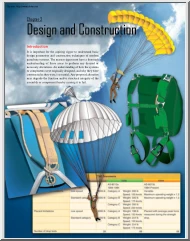
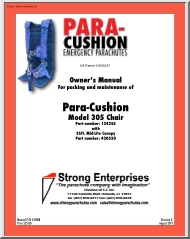
 When reading, most of us just let a story wash over us, getting lost in the world of the book rather than paying attention to the individual elements of the plot or writing. However, in English class, our teachers ask us to look at the mechanics of the writing.
When reading, most of us just let a story wash over us, getting lost in the world of the book rather than paying attention to the individual elements of the plot or writing. However, in English class, our teachers ask us to look at the mechanics of the writing.